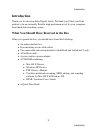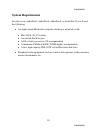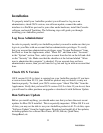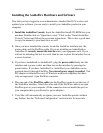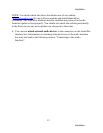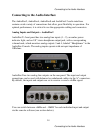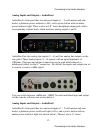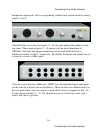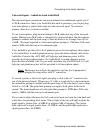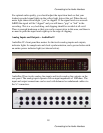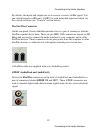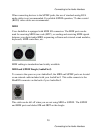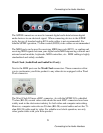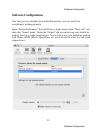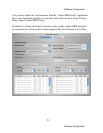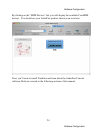
Connecting to the Audio Interface
Universal Inputs – AudioFire4 and AudioFire8
The universal input connections can accept balanced or unbalanced signals via ¼”
or XLR connectors. Since your AudioFire has built-in preamps, you can just plug
your microphone or guitar cable right into the universal input. No external
preamp, direct box, or mixer is needed!
To use a microphone, plug the microphone’s XLR cable into any of the universal
inputs. Whenever an XLR cable is connected to a universal input, the microphone
preamp is enabled and the gain range of the trim knob is set to range from +10 to
+59dB. The input impedance of each microphone preamp is 1.5Kohms. Full-scale
input is 9dBu with the trim set to minimum gain.
Your AudioFire provides 48 volts of phantom power for microphones that require
it. On AudioFire4, to enable phantom power, press the button labeled +48v in the
AudioFire Console (the +48V LED will light up) and phantom power will be
provided to all microphone inputs. On AudioFire8, to enable phantom power,
press the button labeled +48v on your audio interface box (the LED next to it will
light up) and phantom power will be provided to all microphone inputs.
Note:
Phantom power will not be applied to any line level equipment or
guitars plugged in using cables with ¼” connectors.
To record a guitar or line level signal, just plug a cable with a ¼” connector into
one of the universal inputs. Whenever a ¼” cable is connected to a universal input,
the guitar/line preamp is enabled and the gain range of the trim knob is set to range
from 0 to +45 dB. The guitar/line preamp can support both guitar & line level
signals. The input impedance of each guitar/line preamp is 102Kohms. Full-scale
input is 18dBu with the trim set to minimum gain.
If you want to adjust the input level of a universal input, just turn the trim knob and
watch the corresponding level meter. The red light at the top will light anytime the
input signal is greater than –6.5dBFS (or within 6.5dB of clipping). The yellow
light represents a signal greater than –12.5dBFS, and the green light represents a
signal greater than –36.5dBFS.
17
Connecting to the Audio Interface



